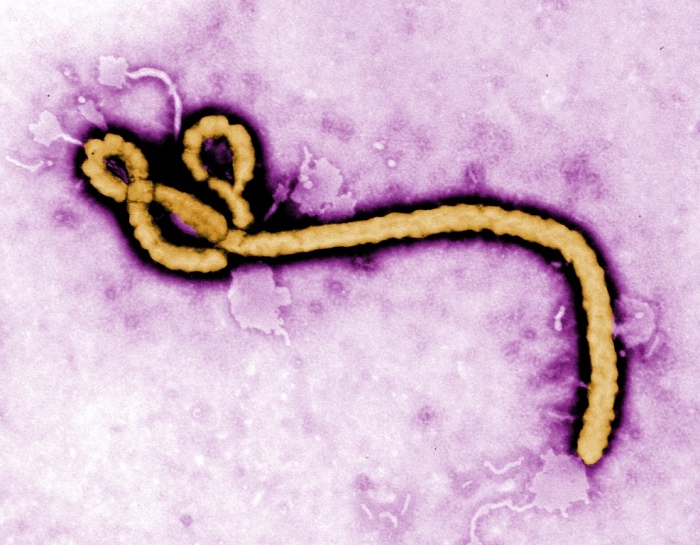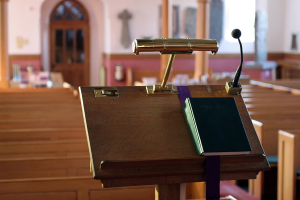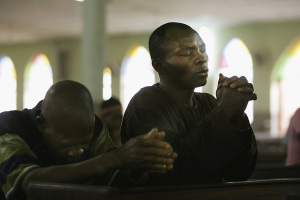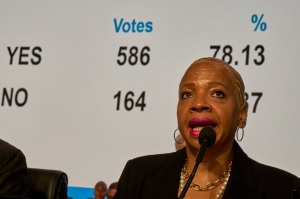CDC Confirms First Case of Ebola in US as Patient Is Diagnosed With Deadly Virus in Texas Hospital

The Centers for Disease Control and Prevention confirmed Tuesday that a patient at the Texas Health Presbyterian Hospital in Dallas became the first person in the United States to test positive for the deadly Ebola virus that is ravaging multiple countries in West Africa.
A news release from the Texas Department of Health Services said the CDC confirmed the positive result after a test was conducted at the state public health laboratory in Austin.
"The patient is [a man from Liberia who traveled to Dallas to visit relatives and has] a recent history of travel to West Africa. The patient developed symptoms days after returning to Texas from West Africa and was admitted into isolation on Sunday at Texas Health Presbyterian Hospital in Dallas," said the release.
It noted that the Texas Department of State Health Services is working with the CDC, the local health department and the hospital to prevent transmission of the disease and investigate the case further.
"The hospital has implemented infection control measures to help ensure the safety of patients and staff," said the release.
Dr. Tom Frieden, director of the CDC, said at a press conference in Atlanta, Georgia, Tuesday that his office is not sure how he contracted the virus.
He noted that others could have also been exposed to the virus but he was certain that it would be contained in the U.S.
"There is no doubt in my mind that we will stop it," he said.
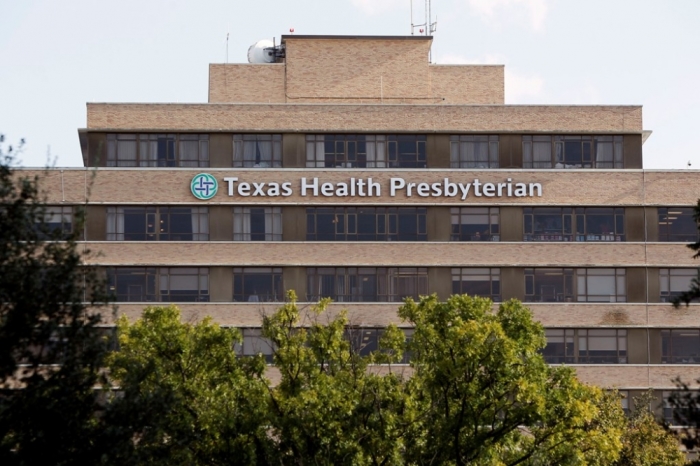
"Ebola can be scary. But there's all the difference in the world between the U.S. and parts of Africa where Ebola is spreading. The United States has a strong healthcare system and public health professionals who will make sure this case does not threaten our communities," Frieden warned further in a CDC release late Tuesday.
"While it is not impossible that there could be additional cases associated with this patient in the coming weeks, I have no doubt that we will contain this," he reiterated.
Frieden said the patient first showed symptoms of Ebola on Sept. 24. He then sought care on Sept. 26, and was admitted to the hospital on Sept. 28.
Patients with early symptoms of Ebola may experience sudden fever, fatigue and headache anywhere from two to 21 days after they have been exposed.
An investigation of the patient's infection will also include identifying everyone he was in contact with while he could transmit the virus. They will be monitored for 21 days and will be isolated if they develop a fever during the monitoring period.
The CDC is expected to make a decision as to whether or not they will move the patient to a high level isolation facility. There are five high level isolation facilities in the U.S.
The patient is currently isolated at the hospital which said it is complying with all recommendations from the CDC and the Texas Department of Health to prevent contagion.
Zachary Thompson, director of the Dallas County Health and Human Services, reiterated Tuesday that the virus would be kept under control.
"This is not Africa," said Thompson in a WFAA report. "We have a great infrastructure to deal with an outbreak."
More than 3,000 Ebola-related deaths have been reported in West Africa, according to The World Health Organization. The Ebola virus has reached epidemic proportions in Guinea, Liberia, Nigeria, Senegal and Sierra Leone.
"The CDC recommends that individuals protect themselves by avoiding contact with the blood and body fluids of people who are ill with Ebola. DSHS also encourages health care providers to ask patients about recent travel and consider Ebola in patients with fever and a history of travel to Sierra Leone, Guinea, Liberia, and some parts of Nigeria within 21 days of the onset of symptoms," advised the Texas Department of Health.
In an assuring message to Americans on Tuesday, however, the CDC noted in their release that: "We do know how to stop Ebola's further spread: thorough case finding, isolation of ill people, contacting people exposed to the ill person, and further isolation of contacts if they develop symptoms. The U.S. public health and medical systems have had prior experience with sporadic cases of diseases such as Ebola. In the past decade, the United States had five imported cases of Viral Hemorrhagic Fever diseases similar to Ebola (one Marburg, four Lassa). None resulted in any transmission in the U.S."
